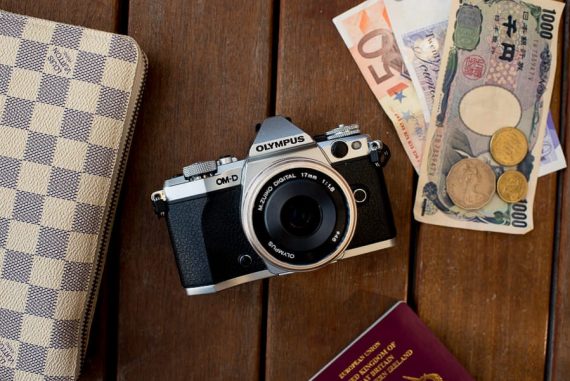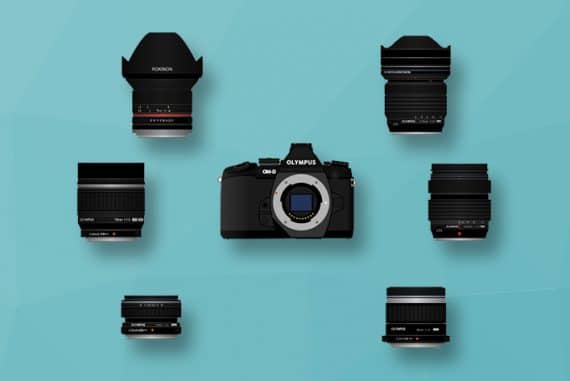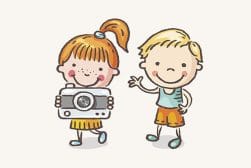

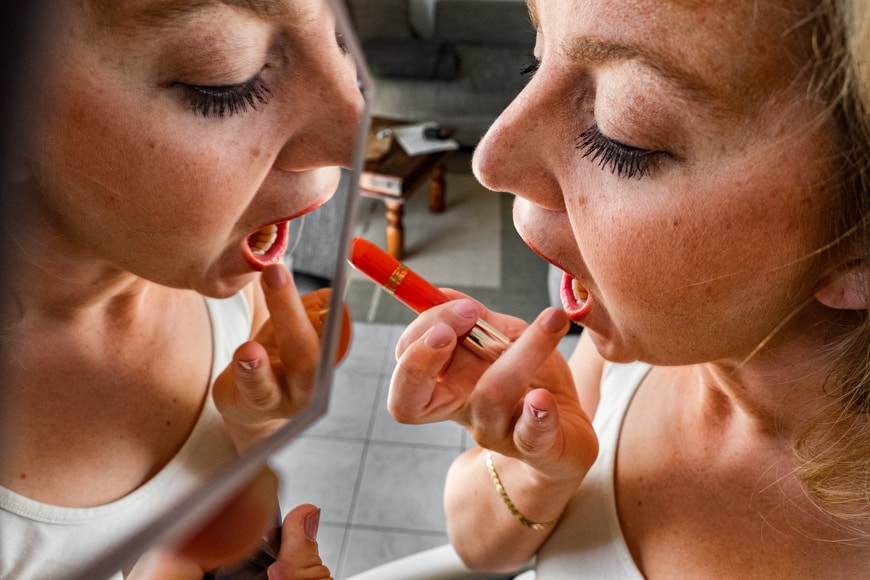




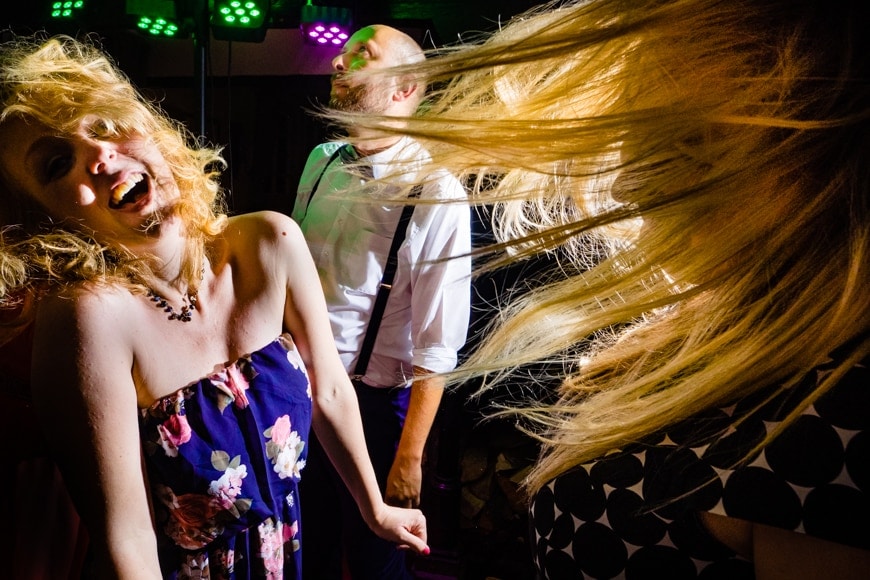
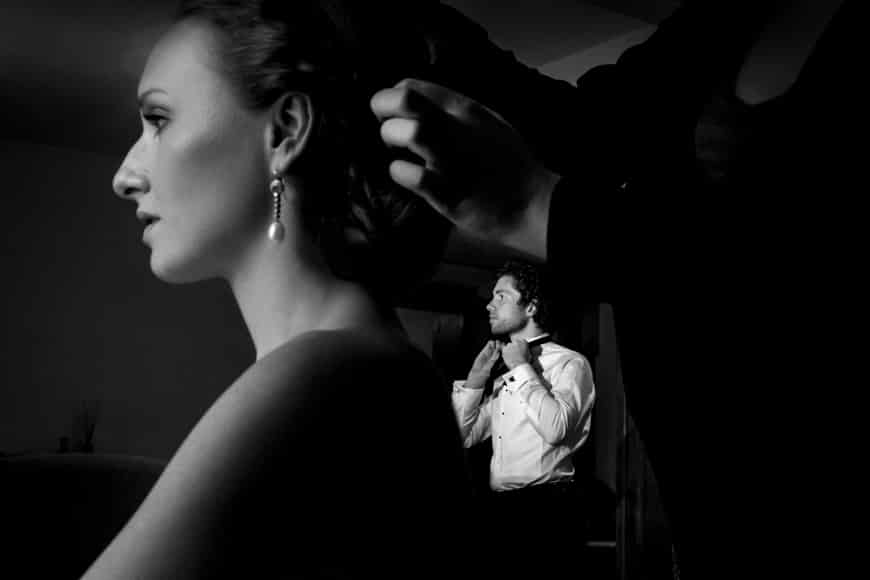
Katrin Küllenberg
Wedding | Last Updated: February 16, 2021
Call me a late bloomer. I came to professional photography pretty late in my life. After my graduation in art history, I worked for a brief period and then enjoyed being a classic stay at home mom for our four kids. But when our youngest son started school, I became restless.
Wondering how the rest of my life would look like, I am so grateful that my husband figured it out for me! I had always loved photography, creating tons of albums for our kids, but I just handled any camera that was handed to me, more by trial and error than actual knowledge.
One night, my husband came home from work and showed me his colleague’s horrid wedding pictures. They looked incredibly tacky and had been extremely expensive. He told me I could do so much better than this.
He showed me the Fearless Photographers website and I felt like entering a whole new world. I had never thought wedding photography could be such a wide field of art, creativity, and fun, and I felt awed by every single image.
My first workshop was not even referring to wedding photography, though I still regard it as the one which pushed me the hardest. I enrolled for a year-long programme with the photographer Ming Thein. It comprised ten different topics like light, composition, etc., and you had to complete each level to his satisfaction before rising to the next level.
It was tough: you did not pass automatically, some stuff I had to do over and over again, but this is the only way how you improve!
I felt my photography change a lot and still, some things I could see kept staying with me. It was what would evolve eventually into my style: Fun moments, families, abstract compositions.
I started shooting weddings in 2013, still attending workshops every year. The more I shot, the bolder and more confident I got.
At a wedding, I am trying to get as much variety into my story as possible. Images with wide open lenses are not my cup of tea. Though it makes for a romantic, creamy look, I will only use it occasionally for a couple shoot. For me the most important thing of my photos is their legacy.
Cameras
Olympus OMD EM1 Mark 1: I started out with two Olympus cameras that I still use today. I did not care about making a big impression with two huge and very heavy cameras. What I loved, right from the start, was their weight: no problem shooting a whole wedding day with those two at my side – my back is their biggest fan!
In the early years, I often got questions from wedding guests, with big DSLRs, curious about the unimpressive gear of the official photographer. But, actually, most of them were very nice, and a lot of them were looking for a change themselves.
Yes, they are comparatively small, but to me this is a major advantage. The camera does not feel intimidating to the couple and guests, even when I get really close. And Olympus was one of the first manufacturers going for a mobile display.
This means so much more flexibility to me. I can hold the camera far up above my head and still have perfect control of the image. I relied more and more on the display and today I take about 95% of my photos without having the camera in front of my face.
By doing this, my photography became more creative and I developed a far more intimate relationship with my couples, families, and wedding guests. Not having this big black box hiding your face makes you less intimidating to your clients and lets you be a real person.
Also, I have a much better overview of what is happening around me, making me react better and faster to moods and moments. The display gives me instant control over my images, as it shows me all the effects of an adjustment of aperture or speed in real time. This way I can realize my vision of the final image much quicker.
I find the OMD very easy to use. There are a number of buttons you can use to assign the most important functions to. The body is very hand-friendly, feeling smooth and ergonomic in my right hand.
The camera has a sturdy body. There have been several times I tripped and fell to the floor but so far it still is hanging on.
Another favorite aspect of mine is that the OMD was one of the first cameras offering silent mode, something that is extremely valuable during church ceremonies (there is a number of priests whose unflattering view of photographers I have changed into the positive…).
But, still, not everything is rosy with this camera. There has always been a big issue with ISO. It is not possible to go higher than 3200, though, officially, it offers a range up to 25600, and here you are already pushing it.
Battery use is another disadvantage. Be prepared to carry a sack-load of batteries with you. On a whole day wedding I run through about 10-14 batteries with my two cameras.
I think that when I started out, Olympus was in the top range of small cameras but, by now, they have fallen, technically, quite behind competitors like Sony.
Nevertheless, if you are not ready to invest a gigantic sum into your gear, this camera could still be your choice (go for the old affordable models – the new one has not added any major improvements that justifies the high price). Remember, it is not the pot that makes a master chef!
Sony a7S: I know it is unusual to have two different camera systems, but so it is… I bought the Sony to have a solid alternative for all those dark situations the Olympus cannot handle and where I would not like to use flash.
It has a great ISO range and in LR the color looks similar to the Olympus. Unfortunately, the general menu is extremely complicated in the way it is organized. Just resetting your SD card makes for an odyssey… I use the Sony with the Sony 35mm f/2.8. A perfect lens!
Lenses
Olympus 12-40mm f/2.8: This is my favorite lens: the one that hardly ever leaves my side during the wedding day! The range is perfect for documentary layering and portraits.
The only time I might change it for a fixed focal lens is when the venue is too dark, as in a church or early mornings in a bedroom when the kids are just waking up. The OMD, as I mentioned before, is not very good in handling high ISO, so in moments like these, I need to change this lens to one with a more open aperture.
Olympus 40-150mm f/2.8: This one is perfect for outdoors and, provided the light is there, for church ceremonies. If you use it at a 150mm, even with the aperture of 2.8, there will be a nice, creamy background, perfect for couple shootings and portraits.
It is also ideal to use for a First Look or just any situation where you want to give your clients an idea of privacy but still capture the moment.
It is often very handy to take pictures of guests as I am too far away for them to become camera aware (we all know how people will throw their arms around each others shoulder and grin into the camera as soon as they see one. And, of course, those are the images that will never make it into the couple’s gallery!)
Still, it is not an easy lens to work with. Especially using it at the 150mm range and an open aperture, I need a very steady hand to focus clearly. I can only recommend shooting a lot of the scene before you, while refocusing several times to be sure you get some satisfying results.
Both of those lenses are waterproof and there have been times I got soaking wet, in the rain, while still shooting.
Olympus 17mm f/1.8 and Olympus 25mm f/1.8: These two I will use during Getting Ready or family documentaries, usually if it is early in the morning and there is not much light.
I keep changing them during the day to get a different look. I like both of them for portraits, but maybe I am more partial to the 17mm as it allows me to incorporate more layers. For example, I usually sit at the table with my families, so I am already pretty close and, with that lens, I can achieve great portraits while including stuff from the table like glasses or bottles.
Olympus 75mm f/1.8: This one comes in handy during dark church ceremonies when the 40-150mm is too difficult to hold steady. It is also amazing for beauty portraits of the bride.
Olympus 12mm f/2: This one is usually the last one I will use on a wedding day, but when it is on, it won’t come off until I leave. It is my party lens. As soon as the DJ gets everyone moving I will switch to using only one camera with the 12mm and a flash, getting right onto the dance floor.
Lights/Triggers
Light gun Lowell G-1: I know I should be using it more, but most of the time, it only comes out during the First Dance. Actually, the wedding guests like it, too, because it creates a round, constant, spot light on the couple for everyone to watch them beautifully.
I usually befriend a guest and ask him to hold the light during that moment, so I am free to move around and get different lighting situations.
YN560 IV: Nothing fancy here. Just some Yongnuo flashes because they are cheap and do their job well. And, if they break, I am not in tears because I just buy another one.
Yongnuo YN560-TX: Same here: It is cheap and works.
MagMod: I use the grids, the sphere , the bounce, and the gels (usually for silhouettes). The bounce is on my camera most of the time during reception, so I do not have to worry about dark ceilings or walls.
The grids I use during Getting Ready, couple shoots, and, of course, on the dance floor. I love how easy the whole system is to use and does not take up a lot of space in my bag.
Bags/Straps
HoldFast MoneyMaker: Having two cameras with me the whole day, I need a sturdy and reliable strap. This one looks beautiful and does its job perfectly – and it is always a sensation when I put it on in front of little kids, letting them wonder if one of Santa’s reindeer’s has magically appeared on the set…
Hardware & Software
I edit all my photos in Lightroom, and work on some of them in Photoshop. As a preset, I use the Two Mann DVLOP which I tweak and modify.
Misc.
Fun gadgets: Mirror, phone, glass, CD. All of those are stuffed into the pockets of my black pant suit – though I might try to look elegant and sophisticated on weddings, my pockets do not always support that look…
I get that stuff out after I covered my safe shots and want to do something different, during couple shoots, Getting Ready, and most of the time, during the ceremony.
The ceremony usually takes pretty long without major changes in moments or scenery. I am also pretty limited in my space, as I try to be as invisible and unintrusive as possible in church. So a mirror or a phone can often make a lot of difference and also keeps me from getting bored.
It has also made for a very memorable personal wedding moment: I was doing a couple shoot and leaning over a bridge railing to get my perfect angle when suddenly my iPhone fell out of my pocket into the little creek below.
It took me about several minutes to kick off my shoes, roll up my pants, and find a way into the water, all the while being cheered on by my couple – and it was a miracle: My phone had neither broken nor did it show any other sign of damage. It was just cleaner than before!
I see my couple in a few years going through their wedding album with their kids, laughing about Aunt Rosie’s silly hairstyle, Grandma’s happy smile, and the wild party moves of their aunts and uncles.
To me this is what documentary wedding photography is all about – and it is what pushed me into family photography during the last years. Having someone document the realities of your life is the best gift you can give your family!
www.katrinkuellenberg.com | @katrinkuellenbergphotography

Check out these 8 essential tools to help you succeed as a professional photographer.
Includes limited-time discounts.







